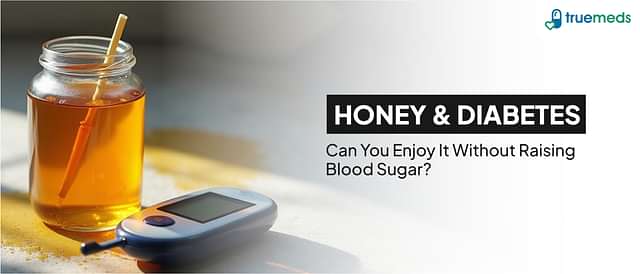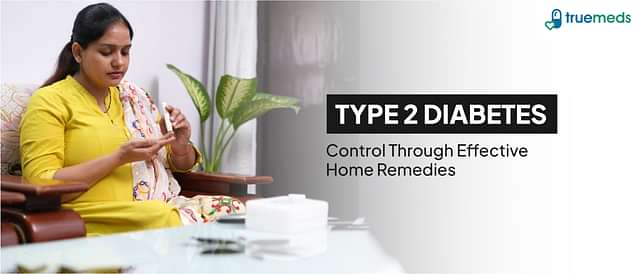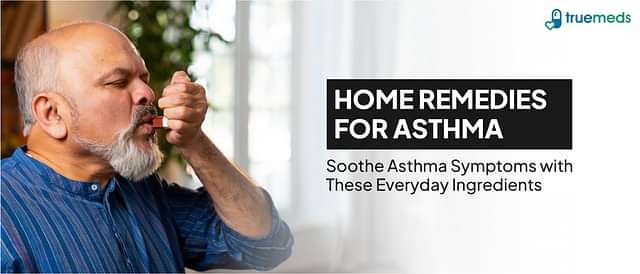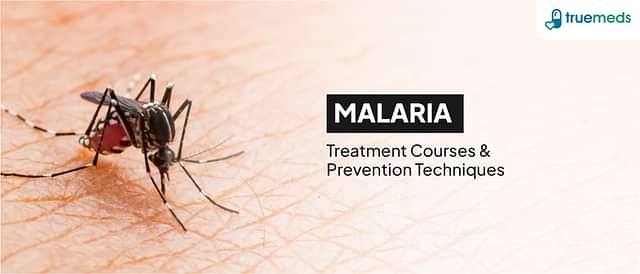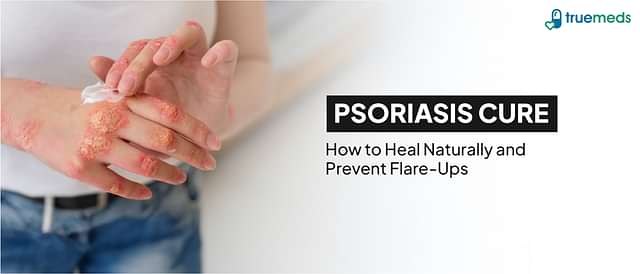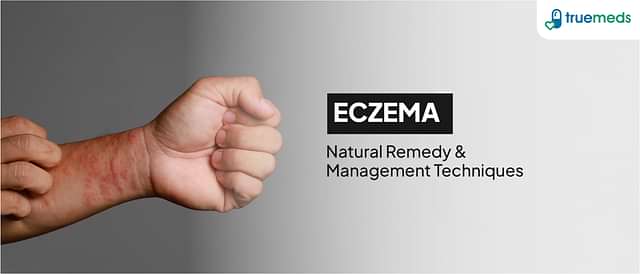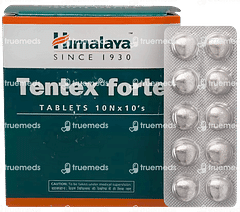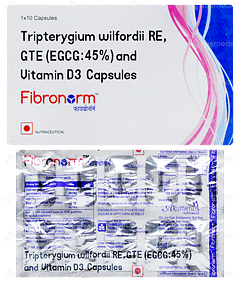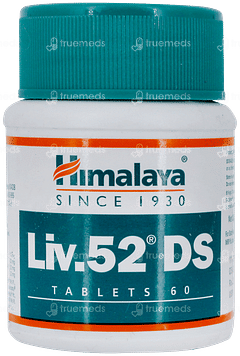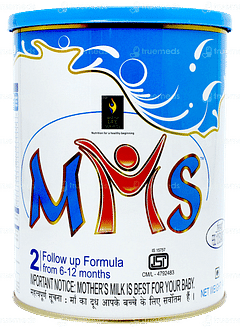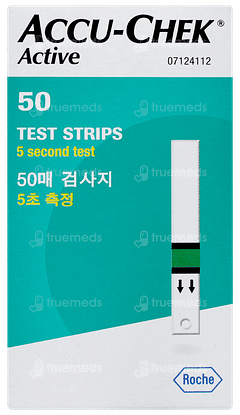Parkinson's Disease
Parkinson's disease is a progressive neurological disorder that primarily affects movement, balance, and coordination. It is caused by the degeneration of dopamine-producing neurons in the brain, leading to a deficiency in dopamine, a neurotransmitter essential for motor control. The exact cause of Parkinson's disease is still unknown, but it is believed to involve a combination of genetic, environmental, and lifestyle factors.
Last updated on : 16 Dec, 2024
Read time : 13 mins
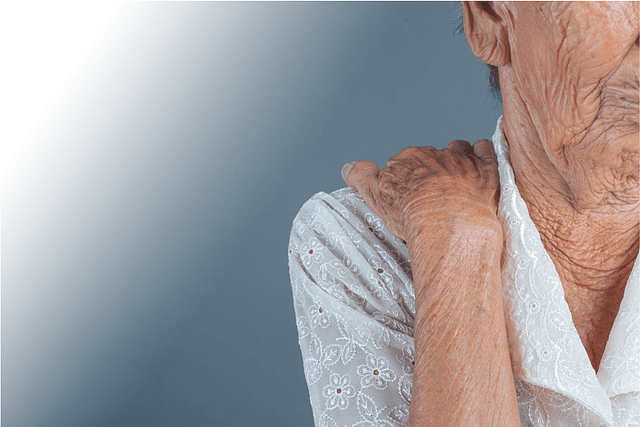
Overview of Disease
Parkinson's disease, also known as idiopathic Parkinson's disease or primary Parkinson's disease, is a debilitating neurological condition that affects millions of people worldwide. Historically, it has been referred to as paralysis agitans or shaking palsy due to its characteristic motor symptoms. While there is currently no cure for Parkinson's disease, various treatments and management strategies can help alleviate symptoms and improve quality of life. Understanding the nature of this condition is crucial for those affected by it and their caregivers.
What Is Parkinson's Disease?
Parkinson's disease is a progressive nervous system disorder that affects movement. It is mainly caused by the degeneration of nerve cells in the substantia nigra. This brain region controls movement. As these nerve cells die or become damaged, they lose their ability to produce dopamine. Insufficient dopamine disrupts the balance of neurotransmitters, leading to Parkinson's characteristic symptoms.
The exact cause of this degeneration is not fully understood. This is why the condition is also referred to as idiopathic Parkinson's disease or primary Parkinson's disease. As the disease progresses, the symptoms become more pronounced and can significantly impact a person's quality of life.
Key Factors about Parkinson's Disease
| Category | Details |
| Also Referred as | Paralysis agitans, Shaking palsy |
| Commonly Occurs In | Men, Older adults (typically begins around age 60) |
| Affected Organ | Brain (specifically the substantia nigra and basal ganglia) |
| Type | Progressive neurodegenerative disorder, progressive movement disorder |
| Common Signs | Tremor, Muscle stiffness, Slowness of movement, Impaired balance and coordination, Depression, Sleep problems, Difficulty swallowing, chewing, and speaking |
| Consulting Specialist | Neurologists, especially those with training in movement disorders |
| Treatement Procedures | Medications (levodopa, carbidopa), Deep brain stimulation (DBS), Surgery |
| Managed By | Neurologists, Other specialists (collaboration) |
| Mimiciking Condition | Parkinsonism (e.g., multiple system atrophy, corticobasal degeneration, drug-induced parkinsonism) |
Symptoms of Parkinson's Disease
The symptoms of Parkinson's disease can vary from person to person, but several primary symptoms are commonly associated with the condition. These include:
Tremor: Involuntary and rhythmic movements of the hands, arms, legs, and jaw.
Rigidity: Stiffness of the limbs, which can lead to muscle or joint pain.
Bradykinesia: Slowness of movement, which can make everyday tasks difficult.
Postural Instability: Impaired balance and coordination can increase the risk of falls.
In addition to motor symptoms, people with Parkinson's disease may experience various non-motor symptoms. These include cognitive impairment, mental health disorders, and dementia. Sleep disorders, pain, and sensory disturbances can also occur. As the disease progresses, the severity of these symptoms may increase. Therefore, individuals with Parkinson's should seek appropriate medical care and explore treatment options.
Stages of Parkinson's Disease
Parkinson's disease, also known as shaking palsy, is a progressive neurological disorder that affects movement, balance, and coordination. The disease progresses through five distinct stages, each with characteristic symptoms and challenges.
Stage 1: It is the mildest form of Parkinson's disease, with minimal symptoms typically affecting one side of the body. Patients may experience slight tremors and changes in posture, facial expressions, and walking. However, these symptoms are often not severe enough to interfere with daily tasks.
Stage 2: This stage is considered a moderate form of Parkinson's, with more noticeable symptoms affecting both sides of the body. Tremors, stiffness, and trembling are more pronounced, and changes in facial expressions and posture are more apparent. Daily tasks may take longer to complete, but balance is generally not impaired.
Stage 3: It marks a significant turning point in the disease progression. Symptoms are more severe and include loss of balance, slow movements, and decreased reflexes. Falls have become more common, and daily tasks are significantly affected. Parkinson's disease treatments, such as medication and occupational therapy, may help manage symptoms at this stage.
Stage 4: This stage makes daily activities even more challenging. Patients may be able to stand without assistance but require a walker or other assistive devices to walk. Independent living is often not possible, and constant care may be necessary.
Stage 5: This is the most advanced stage of Parkinson's disease. Patients may be unable to stand or walk due to stiffness and require a wheelchair for mobility. Constant care is necessary to prevent falls and manage daily activities. Dementia and confusion are also common at this stage.
Causes of Parkinson's Disease
The exact cause of primary or idiopathic Parkinson's disease remains unknown. However, it is believed to result from a complex interplay of genetic and environmental factors. One leading hypothesis, Braak's hypothesis, suggests that the disease may originate in the gut or nasal cavity due to an unknown pathogen. This leads to the aggregation of an abnormal protein called α-Synuclein. This protein then spreads to the central nervous system, causing the degeneration of dopaminergic neurons in the brain's substantia nigra.
The death of dopamine-producing neurons is a key factor in Parkinson's disease symptoms. Dopamine is a neurotransmitter essential for regulating movement. Its loss causes the characteristic motor symptoms, including tremors, rigidity, and bradykinesia (slowness of movement).
In addition to the loss of dopaminergic neurons, other factors that may contribute to the development of Parkinson's disease include:
Genetic Mutations: Certain genetic variations, such as mutations in the LRRK2, SNCA, and PRKN genes, have been linked to an increased risk of developing Parkinson's disease.
Environmental Toxins: Exposure to certain pesticides, herbicides, and heavy metals has been associated with an increased risk of Parkinson's disease.
Age: The risk of developing Parkinson's disease increases with age, with the average age of onset being around 60 years.
Gender: Men are slightly more likely to develop Parkinson's disease than women.
While the exact cause remains elusive, ongoing research helps discover the various factors contributing to its development. This is paving the way for more targeted and effective Parkinson's disease treatments in the future.
Effects of Parkinson's Disease
Parkinson's disease affects various aspects of an individual's life, with symptoms that can significantly impact daily functioning and quality of life. The primary effects of Parkinson's disease include:
Motor Symptoms: The most recognisable symptoms of Parkinson's disease are related to movements, such as tremors, rigidity, bradykinesia, and postural instability. These symptoms can make it difficult for patients to perform everyday tasks, such as dressing, eating, and walking.
Non-Motor Symptoms: Parkinson's disease can also lead to various non-motor symptoms. These include cognitive impairment, depression, and anxiety. Sleep disorders and autonomic dysfunction, such as constipation, urinary issues, and orthostatic hypotension, may also occur.
Social and Emotional Impact: As the disease progresses, patients may experience social isolation, reduced independence, and a decreased sense of self-worth. The emotional toll of living with a chronic, progressive condition can be significant for both patients and their loved ones.
Economic Burden: Parkinson's disease can lead to substantial healthcare costs, lost productivity, and increased financial strain on families. This is especially true in advanced stages when patients require more extensive care and support.
Several factors can increase the likelihood of developing Parkinson's disease. These risk factors include:
Age: The risk of developing Parkinson's disease increases significantly after the age of 60, with an average age of onset around 60 years.
Genetics: Having a close relative with Parkinson's disease slightly increases the risk. Also, rare genetic mutations can contribute to the development of the disease.
Gender: Men are approximately 50% more likely to develop Parkinson's disease compared to women.
Environmental Exposure: Exposure to certain toxins, such as pesticides, herbicides, heavy metals, and solvents, has been linked to an increased risk of Parkinson's disease.
Head Trauma: Repeated head injuries may increase the risk of developing Parkinson's disease, although the causal relationship is not yet fully understood.
Other Factors: Dyspepsia, exposure to oils and metals, and certain lifestyle factors may also play a role in the development of Parkinson's disease.
These risk factors can contribute to the development of Parkinson's disease. However, it is important to note that having one or more of these factors does not necessarily mean an individual will develop the condition.
Prevention of Parkinson's Disease
While there is no cure for Parkinson's disease, certain lifestyle modifications may help reduce the risk or slow the progression of this neurological condition. Below are key strategies involving physical activity, diet, and other factors that may offer protection.
1. Physical Activity:
Regular physical activity is crucial for reducing the risk and managing Parkinson's disease.
Aerobic exercises like running, walking, and cardiovascular workouts improve gait, balance, strength, and physical fitness.
Other beneficial forms of exercise include:
Dancing: Enhances mobility and balance.
Traditional Chinese Martial Arts (e.g., Tai Chi): Improves balance and coordination.
Yoga: Strengthens flexibility and cognitive functions.
Weight Training: Boosts strength and mobility, potentially delaying disease progression.
2. Dietary Choices:
A balanced diet rich in whole foods plays a vital role in reducing the risk of Parkinson's disease.
Plant-Based Foods: Due to their high fibre content, fruits, vegetables, beans, legumes, and whole grains reduce inflammation and support a healthy gut microbiome.
Heart-Healthy Diet: A diet that includes lean proteins, healthy fats, and Omega-3 fatty acids benefits brain health and overall well-being.
3. Other Lifestyle Factors:
Hydration: Proper hydration is essential, as medications used in Parkinson's treatment may cause dehydration.
Environmental Risk Reduction: Minimising exposure to pesticides and avoiding traumatic brain injury can reduce the risk of Parkinson's disease.
Diagnosis & Tests
Diagnosing Parkinson's disease can be challenging, as there are no definitive biomarkers or objective screening tests available. The diagnosis is primarily based on a comprehensive clinical evaluation, which includes:
Medical History: A thorough review of the patient's medical history, including any family history of Parkinson's disease and exposure to environmental toxins.
Physical Examination: Assessment of the patient's motor symptoms, such as tremors, rigidity, bradykinesia (slow movement), and postural instability.
Symptom Progression: Monitoring the progression of symptoms over time to determine if they are consistent with Parkinson's disease.
Imaging Tests: MRI or CT scans may be used to rule out other conditions that can mimic Parkinson's disease symptoms, such as brain tumours or strokes.
Response to Medication: A positive response to Parkinson's disease medications, such as levodopa, can support the diagnosis of Parkinson's disease.
The presence of Lewy bodies, which are clumps of protein that include alpha-synuclein, in the brain is a hallmark of Parkinson's disease. However, this can only be confirmed through post-mortem examination. Accurately diagnosing Parkinson's disease is crucial for determining the most appropriate management and treatment options.
Treatment & Management
While there is currently no cure for Parkinson's disease, a range of treatments and management strategies can help control symptoms. These strategies also aim to maintain quality of life and slow the progression of the condition. The primary goals of treatment are to alleviate motor symptoms, manage non-motor symptoms, and prevent complications. Treatment approaches often involve a combination of medications, surgical interventions, and non-pharmacological therapies.
Medications used to manage Parkinson's disease symptoms include:
Levodopa: A precursor to dopamine that helps replenish the brain's dopamine levels and improve motor function.
Dopamine Agonists: Drugs that mimic the action of dopamine in the brain, such as pramipexole, ropinirole, and apomorphine.
MAO-B Inhibitors: Medications like selegiline and rasagiline that slow the breakdown of dopamine in the brain.
COMT Inhibitors: Medications such as entacapone and tolcapone prolong the effect of levodopa by blocking its metabolism.
Anticholinergics: Medications that help control tremors and muscle rigidity.
In advanced Parkinson's disease, medications may become less effective or cause severe side effects. Surgical options like deep brain stimulation (DBS) can be considered. DBS involves implanting electrodes in targeted brain regions. This procedure helps regulate abnormal neural activity and relieve motor symptoms.
Non-pharmacological therapies play a crucial role in the comprehensive management of Parkinson's disease. These include:
Physical Therapy and Exercise: Regular physical activity and targeted exercises can help improve mobility, balance, and flexibility.
Occupational Therapy: Adaptive strategies and assistive devices can help individuals maintain independence in daily activities.
Speech and Swallowing Therapy: Techniques to improve communication and swallowing difficulties.
Nutritional Support: Ensuring a balanced diet and addressing any nutritional deficiencies.
Psychological Support: Counseling and support groups to help manage the emotional and mental health aspects of living with Parkinson's disease.
As Parkinson's progresses, treatment plans are regularly adjusted to address changing needs and symptoms. A multidisciplinary approach involving neurologists, specialists, and rehabilitation professionals is essential for optimal management. Ongoing research explores new treatments and potential therapies, aiming to find a cure for this condition.
When to See a Doctor?
If you or someone you know shows possible Parkinson's symptoms, consult a doctor for evaluation and diagnosis. Some signs that warrant medical attention include:
Tremors or shaking in the hands, arms, legs, or jaw
Slowed movement (bradykinesia)
Stiffness or rigidity in the muscles
Difficulty with balance or frequent falls
Changes in sleep patterns
Constipation
Depression
Anxiety
Cognitive impairment
Loss of sense of smell
Difficulties with speech
Changes in facial expressions
While there is no cure for Parkinson's disease, early consultation with a healthcare provider can help in diagnosing and managing the disease more effectively.
FAQs
What are the consequences of having Parkinson's disease?
Parkinson's disease leads to progressive motor symptoms like tremors, stiffness, and slow movement, as well as non-motor symptoms such as depression, sleep problems, and cognitive changes.
Can individuals with Parkinson's disease maintain a regular lifestyle?
With proper treatment, lifestyle adjustments, and support, many Parkinson's patients can live relatively normal lives. However, the disease's progression may make this increasingly challenging over time.
What is the primary cause of Parkinson's disease?
The exact cause is unknown, but it involves the death of dopamine-producing neurons in the brain, possibly due to a combination of genetic and environmental factors.
How does Parkinson's disease impact a person's daily life?
As Parkinson's progresses, patients may face increasing difficulties with movement, communication, and daily activities, requiring adaptations, support, and care to maintain their quality of life.
Is there a cure for Parkinson's disease?
Currently, there is no cure for Parkinson's disease, but treatments like medications, deep brain stimulation, and therapies can help manage symptoms and improve patients' quality of life.
Do people with Parkinson's disease experience pain?
While not a primary symptom, some Parkinson's patients may experience pain related to muscle stiffness, cramping, or other non-motor symptoms like nerve pain or central pain syndrome.
References
American Association of Neurological Surgeons. (n.d.). Parkinson's disease. https://www.aans.org/patients/conditions-treatments/parkinsons-disease/
National Institute of Neurological Disorders and Stroke. (2022, August 2). Parkinson's disease information page. https://www.ninds.nih.gov/health-information/disorders/parkinsons-disease
World Health Organization. (2022, April 27). Parkinson disease. https://www.who.int/news-room/fact-sheets/detail/parkinson-disease
Sveinbjornsdottir, S. (2016). The clinical symptoms of Parkinson's disease. Journal of Neurochemistry, 139 Suppl 1, 318-324. https://doi.org/10.1111/jnc.13691
Kalia, L. V., & Lang, A. E. (2015). Parkinson's disease. Lancet, 386(9996), 896-912. https://doi.org/10.1016/S0140-6736(14)61393-3
Armstrong, M. J., Okun, M. S. (2020). Diagnosis and treatment of Parkinson disease: A review. JAMA, 323(6), 548-560. https://doi.org/10.1001/jama.2019.22360
Check Related Salts
Latest health articles
Top Health Essentials
Disclaimer
Top-Selling Medicines:
...View more
Top-OTC medicines:
...View more
Subscribe
Registered Office Address
Grievance Officer
Download Truemeds

Contact Us
Our customer representative team is available 7 days a week from 9 am - 9 pm.
v3.7.5
Our Payment Partners












